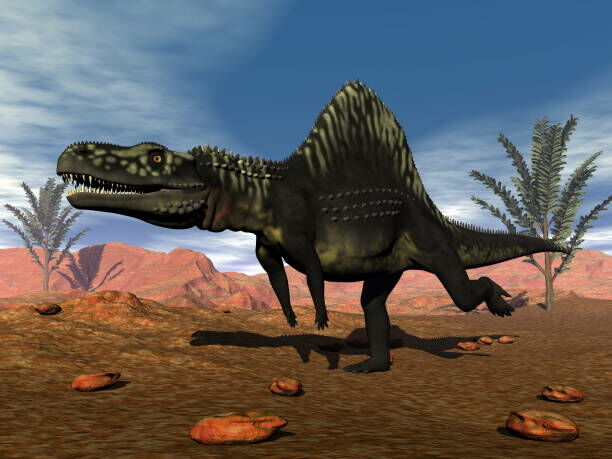Prehistoric animal footprints discovered at Thai waterfall mark country’s oldest find

A groundbreaking discovery of prehistoric animal footprints, estimated to be 225 million years old, has been made at the Tat Yai waterfalls located on the border between Phetchabun’s Nam Nao district and Khon Kaen’s Phu Pha Man district.
The revelation came from the Department of Mineral Resources, which stated that a team from the Mineral Resources Office Region 2 (Khon Kaen), headed by palaeontologist Tida Liard, conducted a preliminary survey of the site. The investigation was sparked by a report last year of animal footprints in Phu Pha Man National Park.
The team, led by Tida, unearthed five tracks of footprints embedded in mudstone on the lower part of the Huai Hin Lad rock formation. They identified the first two sets of prints as belonging to a sauropod – a category of long-necked, plant-eating dinosaurs that roamed the earth during the late Triassic period, between 225 to 220 million years ago. These footprints stand as the oldest animal trails ever discovered in Thailand.
Two additional tracks were hypothesised to belong to smaller creatures, while the last set was attributed to an archosaur reptile. Of particular interest to the team were the archosaur’s prints, as the animal’s paw details, including the claws of both the front and back paws, were imprinted on the stone.
These prints are distinct from those of an archosaur discovered near Ban Na Pho Song, as the newly uncovered footprints possess unique traits previously unseen in Thailand. This has led the team to believe that these footprints could belong to an ancient animal that has yet to be recorded in Thailand’s palaeontological records, reported Bangkok Post.
To preserve the marks, the team used a plastic sheet to collect them. Further studies at the site have been deemed necessary before the arrival of the next rainy season, which could potentially flood the area and wash away any remaining evidence, said Tida.
“The footprints of the archosaur are the most interesting because the details of the animal’s paws appear on the stone, including the claws of both the front and back paws.
“These footprints are different from those of an archosaur found around Ban Na Pho Song nearby as the newly discovered sets have unique characteristics that have not been seen anywhere else in Thailand.”

In a parallel discovery last May, Nam Nao in Phetchabun revealed 225 million year old dinosaur footprints at Tat Yai waterfalls. Recognised as sauropods, these prints echo Thailand’s oldest animal trails, unearthed in Khon Kaen’s Phu Pha Man district, sustaining fervent palaeontological curiosity.
Latest Thailand News
Follow The Thaiger on Google News:


























